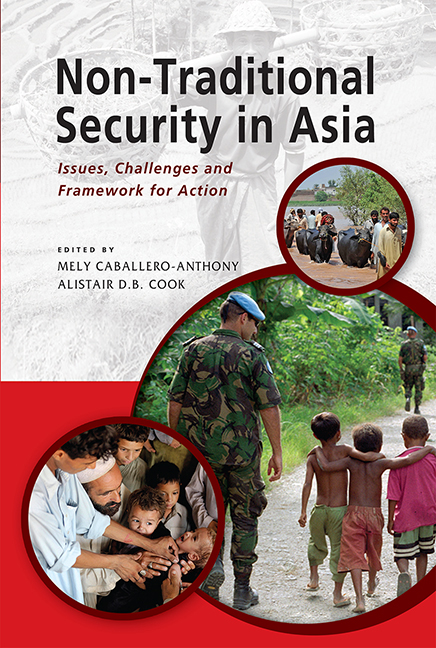6 - Internal Conflict
Published online by Cambridge University Press: 21 October 2015
Summary
Asia is a region where internal conflicts continue to plague state and human security, despite the decline of interstate conflicts since the end of the Cold War. Moreover, studies on the patterns of internal conflicts have also been confined to armed insurgencies, secessionism and civil conflicts, while less attention has been given to other forms of internal conflicts such as religious and/or ethnically-motivated communal violence, violent political clashes among competing political forces, and political uprisings. In recent years, the dimensions of internal conflict in Asia have also become more complex due to the growing challenges posed by religious radicalism and terrorism.
To be sure, the multiplicity of patterns of internal conflicts in Asia has dramatically increased the human costs of conflicts and violent threats faced by people within states. These have also resulted in an array of human insecurities, from poverty and human deprivation, mass population displacement, worsening human rights abuses, particularly among women and children, marginalization, threats of infectious diseases, and forced migration to a host of transnational crimes. In Southeast Asia for example, internal conflicts within individual member states have had actual and potential cross-border implications. The secessionist and insurgency problems in the Philippines, the violence in the Muslim provinces in Southern Thailand, the ethnic tensions in Myanmar and restive provinces in Indonesia could all affect regional security and stability. Indeed, while many Asian states have moved up the global rankings of economic development, there still remain internal conflicts within many of these states. As a result, while some areas of one individual state prosper other areas with a higher prevalence of violence have fallen behind.
If we are to break the cycles of violence and lessen the stresses that drive them, countries must develop more legitimate, accountable and capable national institutions that provide for citizen security, justice and jobs.
— Robert B. Zoellick, World Bank President Washington, 11 April 2011- Type
- Chapter
- Information
- Non-Traditional Security in AsiaIssues, Challenges and Framework for Action, pp. 118 - 157Publisher: ISEAS–Yusof Ishak InstitutePrint publication year: 2013



